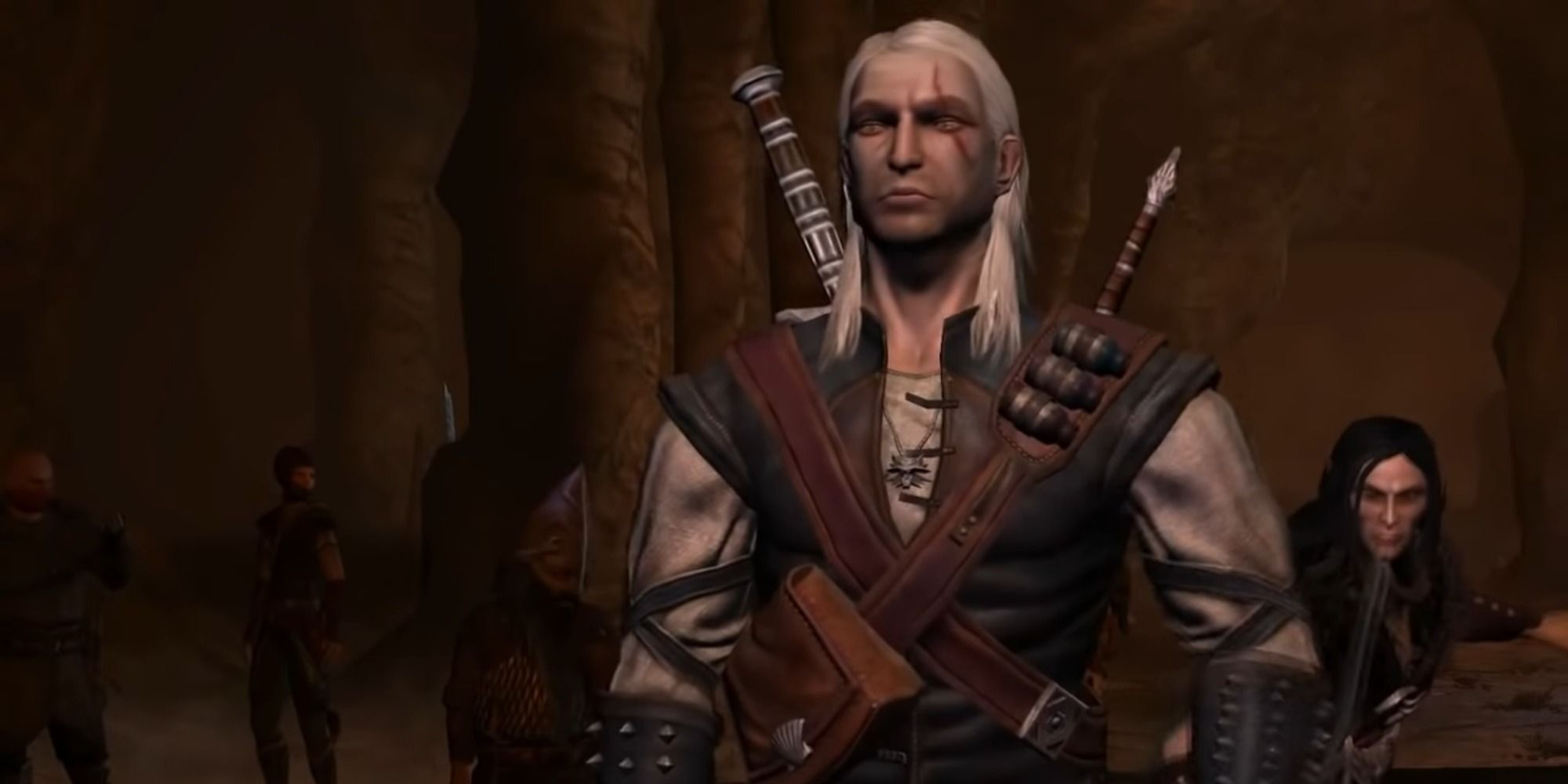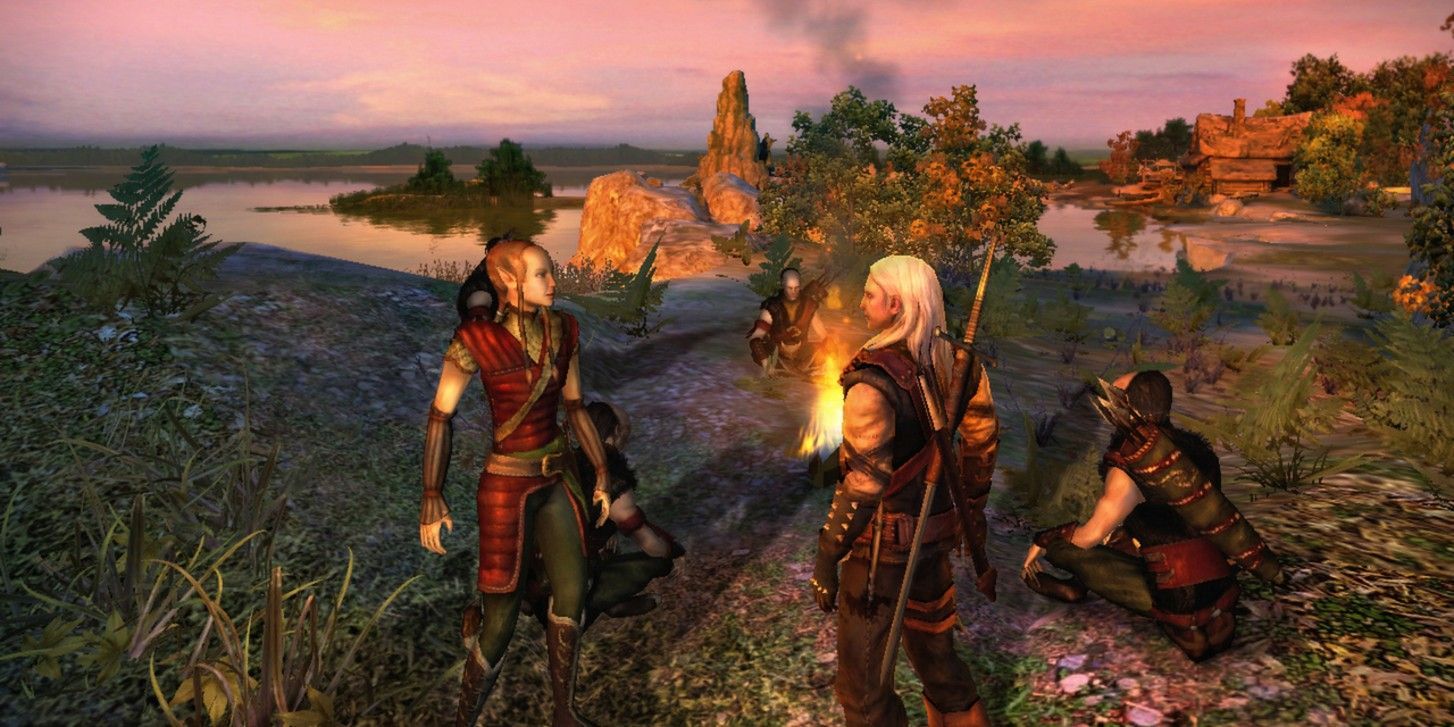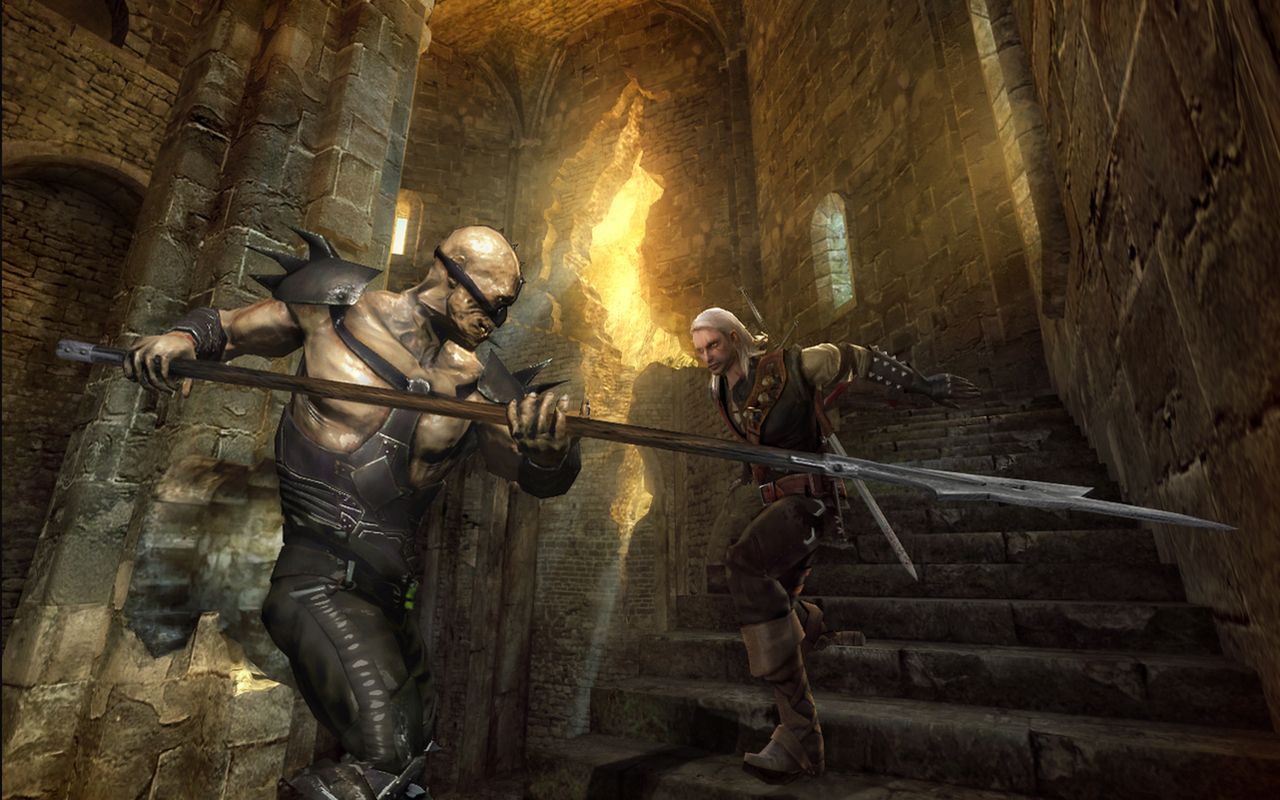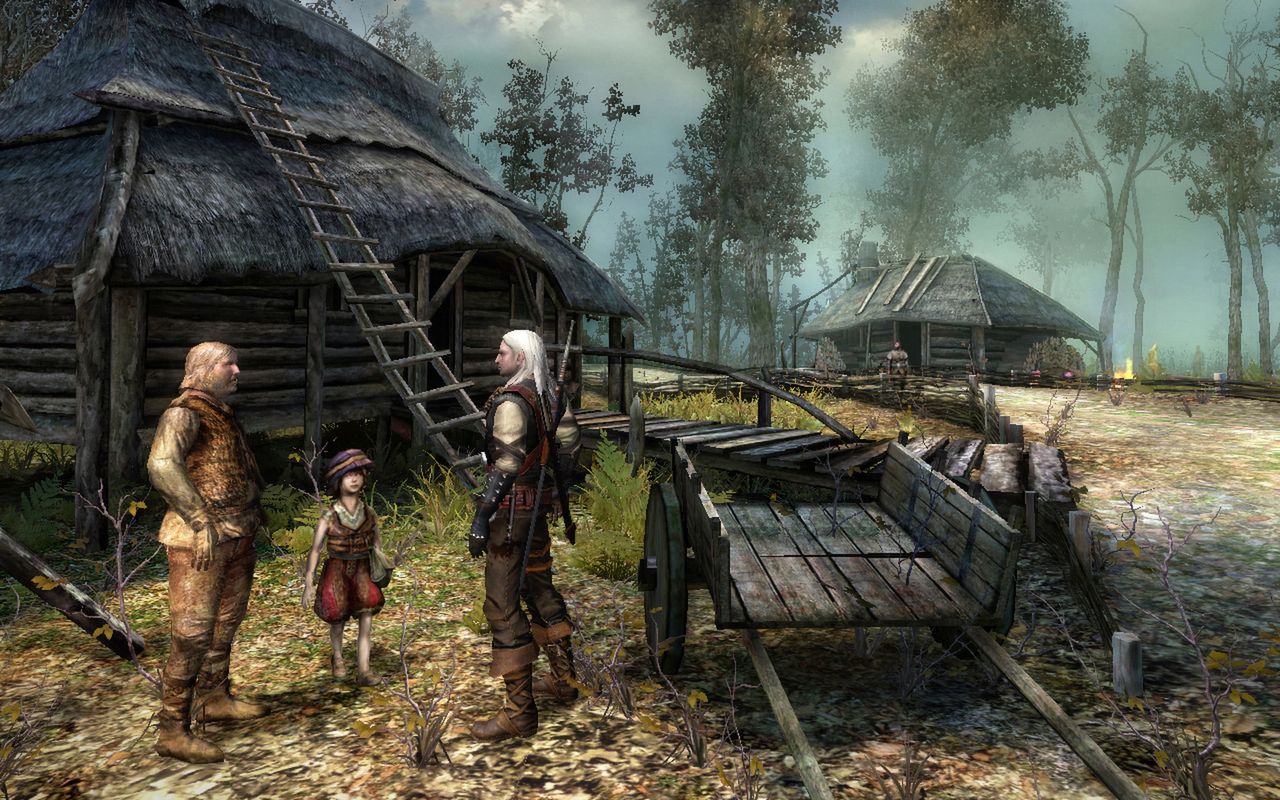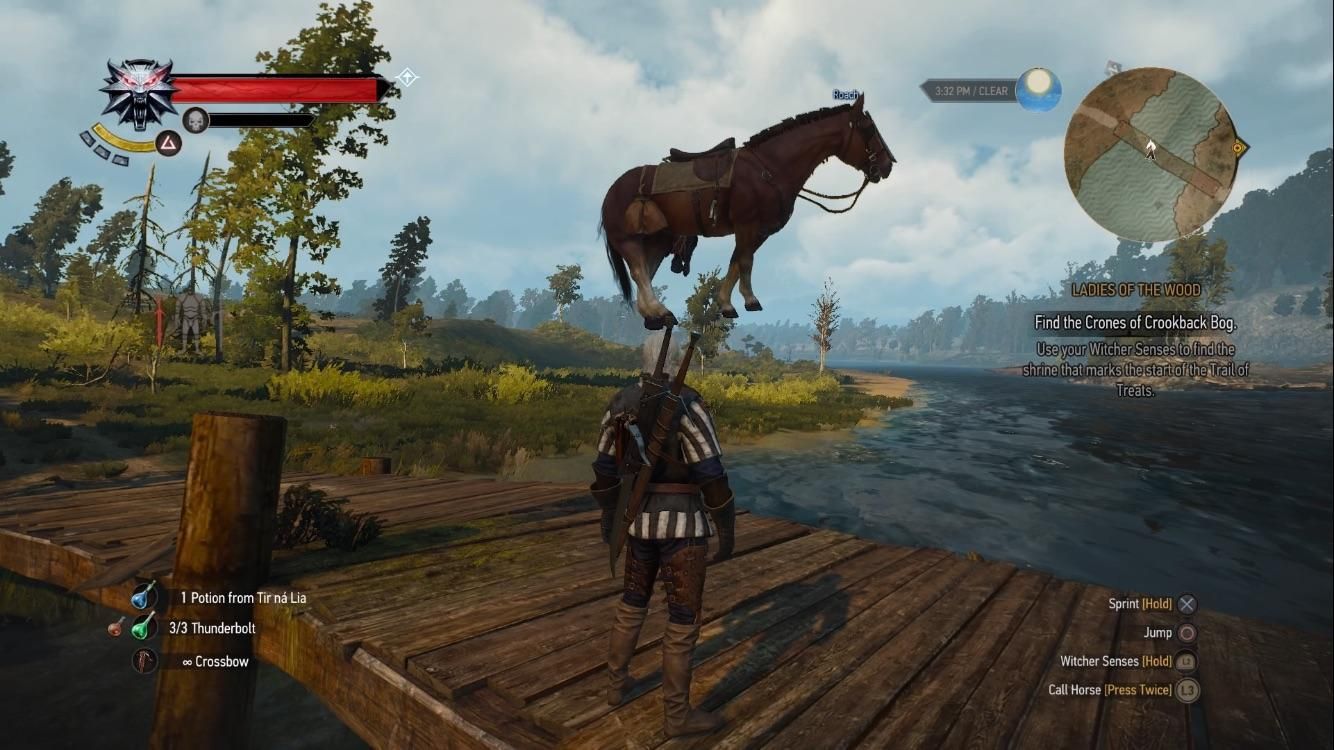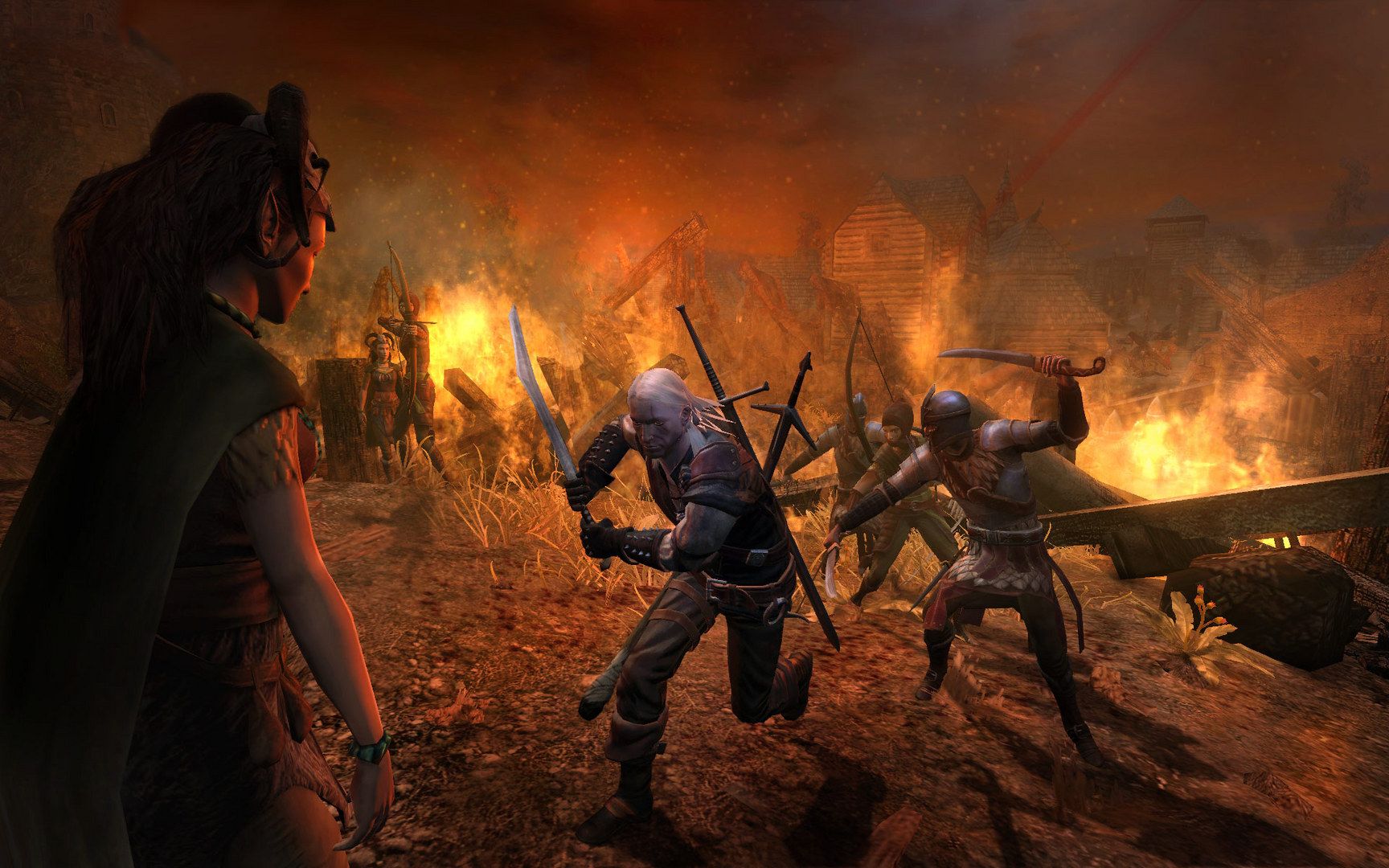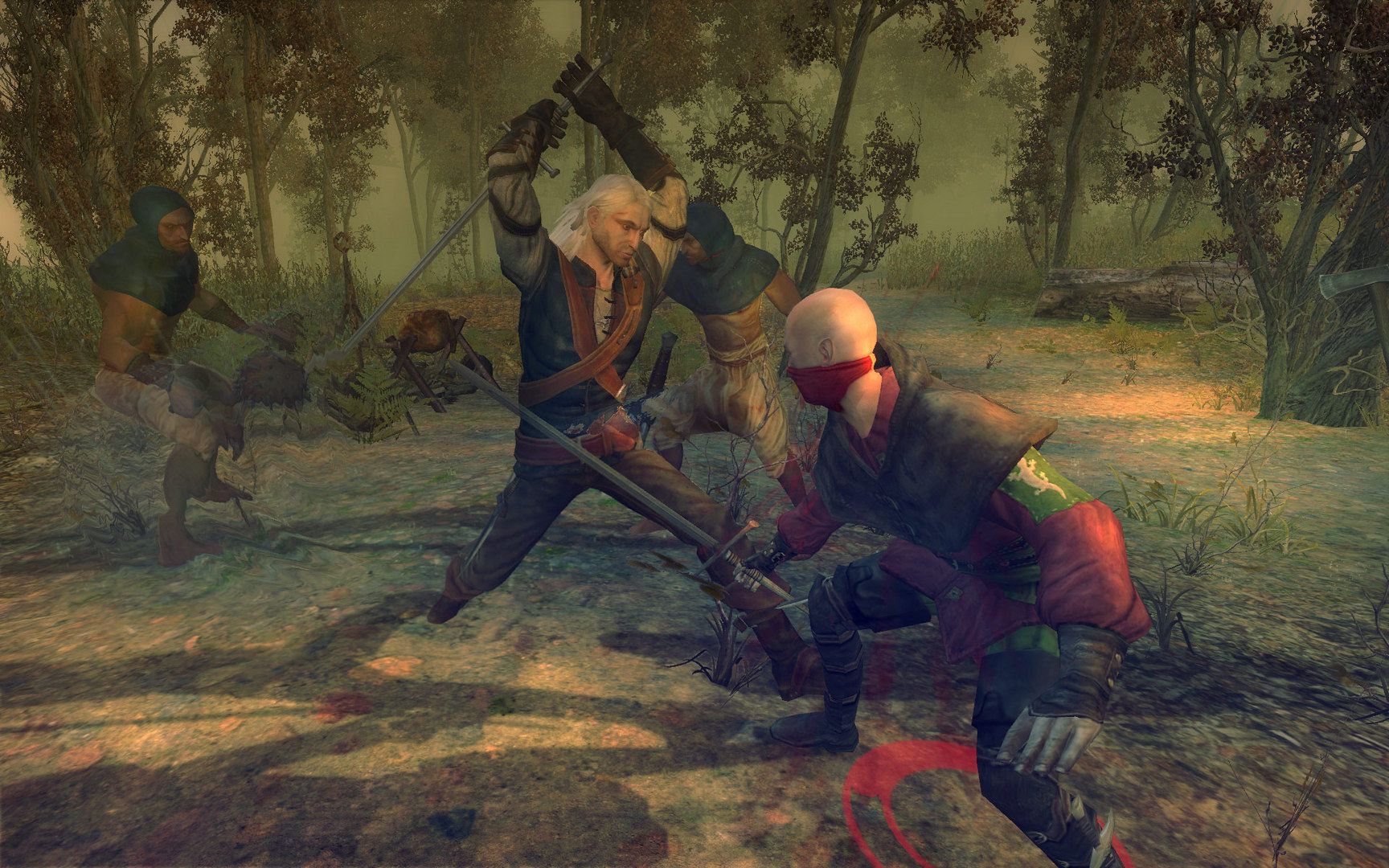On this day 14 years ago, a white-haired monster hunter stood on the world stage for the first time. Although Geralt of Rivia is illustrious among fans of The Witcher today, 2007 was a different beast. This was a character drawn from a fantasy book series that wasn’t well known outside of Poland - hell, Geralt originally wasn’t even supposed to be in the Witcher games. Hard to believe now, eh?
As a means of looking back on CD Projekt Red’s first major title, we spoke to ex-lead narrative designer Artur Ganszyniec and ex-lead gameplay designer Maciej Szcześnik about the ambitious Polish RPG that would go on to take the world by storm and change game development forever. From a budget-eating jump animation to console ports hindered by the 2008 financial crisis, here’s what two departmental leads on Poland’s breakout hit have to say about the genesis of one of video games’ most iconic stories.
For Szcześnik, winding up at CDPR almost happened by accident. He grew up playing pen-and-paper RPGs with friends in a small town 100km from the nearest Warhammer shop. Their solution was simple but creative: they would scratch build and kitbash the cheapest plastic soldiers they could find and invent their own rulesets. In Szcześnik’s eyes, this meant he had to “design around constraints” from the time he was ten years old. Years later, he started publishing Call of Cthulhu adventures in a Polish magazine called Magia i Miecz. After studying physics in college, his interviewers at CD Projekt were two ex-editors who recognised and immediately hired him.
“There were no ‘game design departments’ in Polish game dev studios back then,” Szcześnik tells me. “Programmers and artists were designing the games. But it was clear The Witcher would be a huge game, probably the largest project ever done in Poland. So Michał Madej had the task to create the first proper game design department in Poland.”
The Witcher was both Szcześnik and Ganszyniec’s first job in game development, meaning the pair of them have been in the industry for around 15 years now. Still, as Szcześnik explains above, Polish studios in 2007 didn’t have departments, let alone the kind of rigid divisions needed to pull off a project this ambitious. To rectify this, CDPR split the studio into two distinct teams: gameplay and story. Szcześnik helmed the former and Ganszyniec took charge of the latter.
“A year and a half before the release, there was a pivot point in the production, when many changes were happening to the game’s vision, scope, and to how the team was organized,” Ganszyniec recalls. “We worked act by act and would usually start with a one-pager outlining the story. Then we would brainstorm how to tell the story using quests, how many quests were feasible, how best to use the characters and locations we had. Due to a very tumultuous production, many of the visual assets were created to tell a different story, and we had to repurpose them. We would decide the mood of every act - Act 1 was a horror story, Act 2 was a murder mystery, Act 5 was a war movie - and the morale of every quest.”
While all of this was being written, recording and implementing it was a whole other ball game. Szcześnik explains that he and then-lead animator Adam Badowski - who is now head of CDPR - were tasked with casting motion capture actors early in production. Despite the ubiquity of major actors in the contemporary triple-A space, this presented a monumental challenge for a late-’00s Polish studio who had never shipped a game of its own.
“We started to work with the whole team right away, but we chose Maciej [Kwiatkowski] for the role of Geralt,” Szcześnik says. “Our task was to develop a unique fighting style. I was responsible for the combat mechanics, so I knew what moves were suitable. Maciej Kwiatkowski was proposing the moves and Adam Badowski pushed him to the limits of human abilities. I think he managed to cross this line slightly - it was pure fun.
“We had to invent everything by ourselves. To my knowledge, The Witcher was the first game in Poland that used motion capture. After weeks of hard training in some basement gym, we were able to record the moves of Geralt in France - there were no motion capture studios in Poland. Later, we were also recording in Germany. I started to travel a lot.”
Szcześnik also had a sizable number of duties outside of casting and supervising motion capture. Among other things, he was responsible for several distinctly ‘Witcher’ mechanics like alchemy, the game’s then-original RPG system, and the now-iconic living cities.
This workload was typical of a lead on the first Witcher game. Ganszyniec explains that as development went on, he would spend more and more time playing the game, providing feedback, stress-testing narrative branching, and editing dialogue. As far as he can remember, he was the first person to ever play The Witcher from start to finish, largely because towards the end of production he would spend most nights playing whatever the newest build was after a day of performing his other duties as lead.
In terms of the ‘moods’ associated with each act mentioned above, Ganszyniec cites Act 2’s detective story as a particularly sticky problem. By the time all of the dialogue had been recorded, the quest was still convoluted and impossible to understand. Unfortunately, CDPR didn’t have the money to re-record the actors, and so Ganszyniec spent three days rewriting journal entries in order to rebuild the story around the voice lines - “I learned a lot about how not to design investigations.”
On the other hand, he has fond memories of Act 1’s Abigail storyline - which was also scrapped twice prior to settling on a final iteration - and loves how Act 4’s 19th Century Slavic poetry-inspired folklore showcases Polish culture to the world. Szcześnik echoes this, saying, “We had it in our blood - I remember my grandmother telling me bedtime stories about Drowners living in whirlpools in the nearby river.”
While it’s one thing to reflect on what made it into the game, it’s another thing entirely to think back on what might have been. While we already know that the original protagonist of The Witcher was a man named Berengar, there were also a whole bunch of other ideas that were left on the cutting room floor.
“At the beginning the game was supposed to be two times longer, with many extra locations and characters, but we had to cut them due to budget constraints,” Ganszyniec says. “I think it was the best [thing] that could happen, because we had to find a way to tell the story using a smaller cast of characters, and that made the game more concise and emotional. We see how Yaevinn and Siegfried change during the course of the story, we learn that the foul-mouthed fence from the poor quarter of Vyzima is the head of the King’s intelligence. In the first draft of the story the fence and the spy were different characters, Yaevinn is an amalgam of several elven warriors, et cetera.
“So, in hindsight, the budget constraints were a great thing - however stressful designing the necessary changes was at the time. We all would kill for an engine that allowed Geralt to jump, because every jump had to be an animated cutscene, and it ate our budget for story cutscenes.”
Szcześnik has similar recollections, although naturally his are more oriented around gameplay than story given that he and Ganszyniec were leads of two separate departments.
“It was a long time ago, but I think we all wanted to make a more action-oriented game with more fluid combat,” Szcześnik says. “I remember that Michał Iwanicki implemented the third-person ‘over the shoulder’ camera just weeks before release. It was kind of ‘kept secret’ from the board to the very last moment. There were probably a ton more features we would have liked to add back then. I'm pretty sure horse-riding and more freedom in exploration were a topic at some point. We were all super ambitious, and we thought we were making the best game in the world. We had to wait for that until the third Witcher, though.”
While Ganszyniec and Szcześnik are both obviously proud of the version of The Witcher that shipped back in 2007, there is one thing that both of them wish they could retroactively remove. If you’re familiar with the series, you’ll probably be able to guess what it is.
“To be honest I’m not a fan of the collectible nudes but the decision was outside my hands,” Ganszniec says.
“I would also probably exclude the card-collecting mechanic,” Szcześnik explains. “We removed it in the second Witcher. That is the only thing I could feel ashamed of today - I think any mechanical approach to romance and relationships is a wrong choice. I should add it was not my design, though.”
There’s also the issue of crunch, a problem that plagued the first Witcher game especially towards the end of development.
“For many of us it was the first real job, or at least the first job in the game industry,” Ganszyniec says. “We were following a dream and thought that what we were doing was important. That would easily turn into a kind of unhealthy zeal. There was a lot of crunching and, in hindsight, a fair share of toxic behaviour. I wish I could say I was not a part of the crunch culture, but being a lead, I’m afraid I got totally sucked into it. Finishing the game became a mission, and we would do almost anything to get it done.
“There were moments when I would spend days and nights at work, and I lost many friends during that time, having completely dropped out of the radar. I had no time for personal relationships and was secretly glad, because nothing distracted me from work. After the release I had a depression episode and needed three months to recover. So, when during the production of The Witcher 2 the crunch started, I quit. The price became too high for my preferences. I cannot say if I would do it again, but I have no doubts that the experiences and relations I gained when working on the Witcher shaped me as a game developer.”
Szcześnik, while slightly more positive about his time at the company in general, also cites crunch as a real problem. “I have to admit, we had a lot of crunch time during the last year of development,” he says. “Honestly, I didn't mind. I was in my 20s and I enjoyed working on The Witcher a lot. We knew we were working on something great.
“I quit my job at CDPR twice. Once a year after the release of the first Witcher, then I came back to work on The Witcher 2 as lead combat designer. I quit once more a year before the release of The Witcher 3. I was asking myself numerous times why I had quit, and Adam Badowski actually gave me the perfect answer on my second exit interview. He said that he knows now that I shouldn't manage a team - it burns me out. I think I will always be grateful for this exit interview. And it's true, I love making games, but I wouldn't say I like managing people. I think I'm not assertive enough - I want everyone to be happy, which is not possible. And you have to be a lead to have a say on the game in big companies. So I would love to work on The Witcher series again, but I would have to have a meaningful role and not manage a team simultaneously.”
These days, Szcześnik is fully independent - as is Ganszyniec - and prefers working on his own games, which has freed him up to move back to a smaller town outside of Warsaw and spend more time with his “awesome daughters.”
Obviously Ganszyniec and Szcześnik both have their war stories from The Witcher. 14 years on, they both view the first game through a similar lens: it’s something they’re proud of, that they got too sucked into, that they probably won’t ever do again.
“I think the game stays strong today because we genuinely put our hearts into it,” Szcześnik says. “I know how pompous it sounds, but I think it's true. We were always our most vicious critics. If something was ‘not witcher enough,’ someone from the team would promptly and gladly let you know about it.
“I'm pleased that there are calls for a remaster - I would play one myself. Initially, there were plans to port the game to consoles when we started working on The Witcher 2, but it couldn't be done. I think it was primarily because of the 2008 financial crisis - maintaining multiple projects at the same time was simply too risky.”
“In a way, the first Witcher game is a miracle,” Ganszyniec explains. “It was designed and developed by a bunch of amateurs, riding on enthusiasm, energy drinks, and anxiety. For most of the production we had no idea if what we were making was even playable, and we had our doubts if the game was good at all. Only when we first presented a playable demo to the press and got great feedback, we realized that there is hope and that we could be making something unique. But at [that] moment the rest of the game was in complete disarray and the pressure to make the whole game at least as good as the demo became almost unbearable.”
Szcześnik, independently of Ganszyniec, offers an example of this exact juxtaposition of happy press with a game that was far from finished, which also doubles as a fairly apt anecdote in terms of gaining insight into day-to-day development on the game.
“Remember I said we were not hesitant to add or change stuff at the very last moment?” Szcześnik says. “I remember when we were presenting the demo at E3 2005, the game would sporadically crash when the camera was facing towards the water. We couldn't find the reason, and we had to take this demo with us. Downloading a new version was out of the question because of the Internet speeds, so we practiced the demo in the hotel numerous times to learn how to play without showing the water.
“That was the Vizima Dike location - basically, a bridge surrounded by a lake. Later, it turned out one of the 3D artists had changed a model of a fish in the lake and forgot to send its material to the server. When the game camera was to render this particular fish model, it would crash the game. No one would ever notice this specific fish in the water during the demo, but the artist insisted the previous model was not a freshwater fish. That adequately represents our mentality during the whole development.”
“I think we succeeded because we were too inexperienced to realize that what we aimed for was impossible,” Ganszyniec tells me. “I guess that with the next two games the team lost that innocence and it all became harder and harder. Having said that, working on the Witcher franchise was sort of a dream job for me. I grew up on Sapkowski’s stories and remember waking up earlier to buy the next installment of the Witcher saga as soon as the bookstore opened. Being responsible for giving Geralt a literal second life, and working with a team of other enthusiasts was both fun and a privilege. By the end most of the team became real masters of the Witcher lore. And overall, I think we did a good job.”

